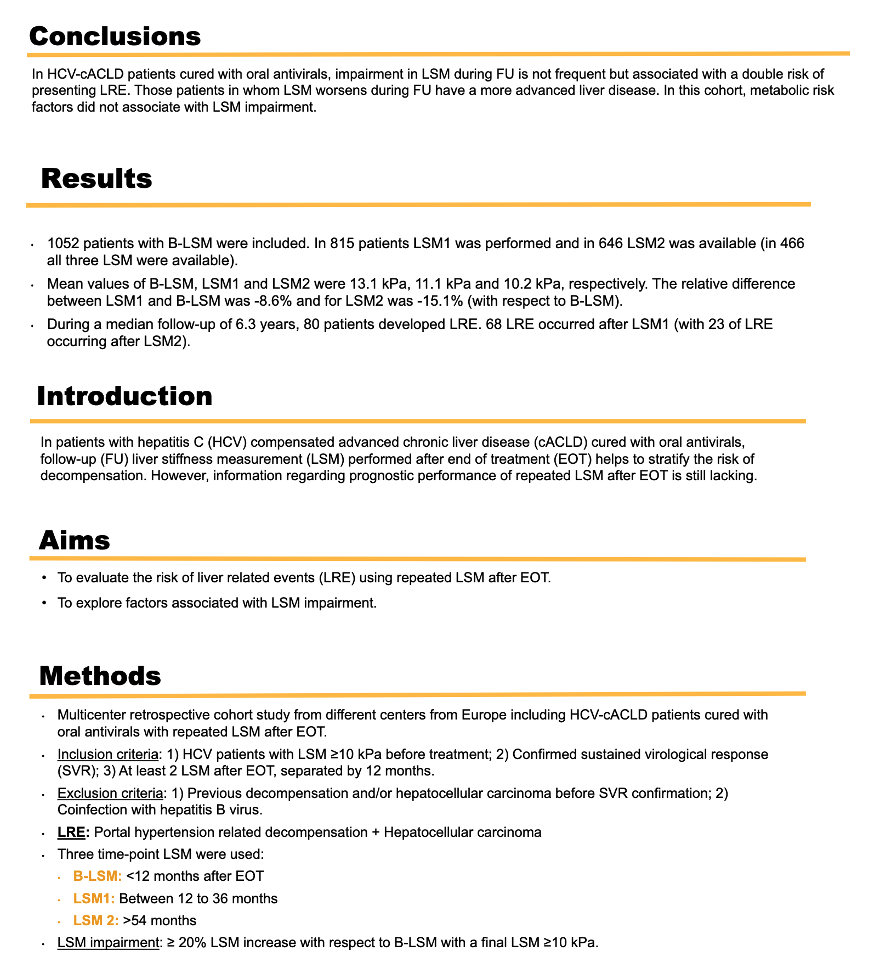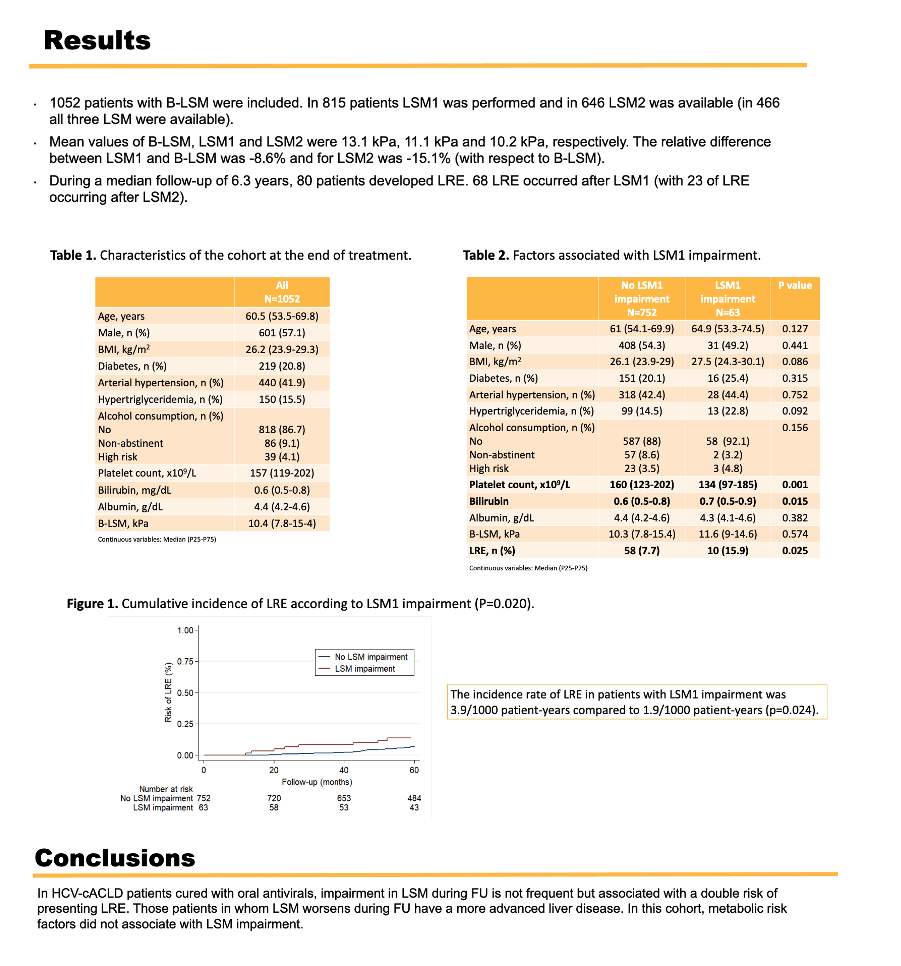 |
 |
 |
| |
Prognostic implications of liver stiffness impairment after HCV cure in cACLD patients
|
| |
| |
EASL 2024 June 5-8 Milan Italy

ABSTRACT
Background and aims: In patients with hepatitis C (HCV) compen-sated advanced chronic liver disease (cACLD) cured with oral antivirals, follow-up (FU) liver stiffness measurement (LSM) per-formed after end of treatment (EOT) helps to stratify the risk of decompensation. However, information regarding prognostic per-formance of repeated LSM after EOT is still lacking. We aimed to evaluate the risk of liver related events (LRE) using repeated LSM after EOT and explore factors associated with LSM impairment.
Method: We retrospectively analyzed a multicentric European cohort including HCV-cACLD patients cured with oral antivirals with repeated LSM after EOT. We used 3 time-point LSM: after EOT (B-LSM), between 12 months to 36 months after EOT (LSM1) and after 54 months (LSM2). LSM impairment was defined as ≥20% increase with respect to B-LSM with a final LSM ≥10 kPa. The cumulative incidence of LRE was compared between groups. LRE included decompensation events and hepatocellular carcinoma.
Results: 1052 patients with B-LSM were included. In 815 patients LSM1 was performed and in 646 LSM2 was available (in 466 all three LSM were available). During a median follow-up of 6.3 years, 80 patients developed LRE. 68 LRE occurred after LSM1 (with 23 of LRE occurring after LSM2). In 63 patients (7.7%), LSM1 worsened (increase ≥20% with LSM1≥10 kPa) during FU vs 752 patients. Patients with LSM1 impairment had lower baseline mean platelet count (140 x 109/Lvs166x109/L, p < 0.001), higher bilirubin levels (0.8 mg/dL vs 0.7 mg/dL, p = 0.016) and higher GGT levels (45 IU/L vs 36 IU/L, p = 0.056) compared to patients without LSM1 impairment. No signifi-cant difference was found in metabolic risk factors neither in alcohol consumption between both groups. The incidence rate of LRE in patients with LSM1 impairment was 3.9/1000 patient-years com-pared to 1.9/1000 patient-years (p = 0.024). The risk of LRE at 5-year-FU was 20% in the LSM1 impairment group vs 11.6% in the other group (p = 0.079). Due to short FU after LSM2 (median 14 months), incidence of LRE related to LSM impairment was not explored.
Conclusion: In HCV-cACLD patients cured with oral antivirals, impairment in LSM during FU is not frequent but associated with a double risk of presenting LRE. Those patients in whom LSM worsens during FU have a more advanced liver disease. In this cohort, metabolic risk factors did not associate with LSM impairment.


|
| |
|
 |
 |
|
|